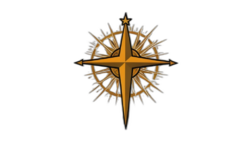Novemberism
| Novemberism Church | |
|---|---|
 | |
| Abbreviation | NC |
| Classification | Mainline Protestant (with various theological and doctrinal identities, including Anglo-Catholic, conservative christianity and Evangelical) |
| Orientation | Anglican |
| Scripture | Holy Bible |
| Theology | Anglican doctrine |
| Governance | Blue Council |
| High Patriarch | Lucius van den Berg |
| Language | English, Pelzian, Old Pelzian |
| Headquarters | Great Church of Zwanport |
| Origin | Fallholt - Pelz |
| Congregations | 9.5 Million |
| Members | 9,584,791 active members (2022) |
| With Faith We Pray | |
Novemberism, or Novemberisme, in Pelzian, is the dominant faith accepted in the Holy Land by the Pelzian people across what is considered ancient Pelzian territory. Novemberism has always been the root of ideologies that have originated from Pelz. “Novemberism” etymology stems from the events of November of 1424, when the early Pelzians gathered in the capital took the monumental step to set aside ecclesiastical differences and reform the Church under the same governing body. Ever since the religion has been the dominant governing religion of Pelz and had the biggest impact upon the governing body of the country.
History
The Recorded History of Pelz traces the origins of Novemberism back to the 1320s through ancient scriptures attributed to Jacob The Wise, a revered figure among believers of Novemberism. His teachings laid the foundational structures of the faith, which were further elucidated upon in textbooks recovered in later centuries, providing invaluable insight and vision for Novemberism. The Testaments Of The Jacob, attributed to him, serve as a cornerstone for understanding and preaching the religion, particularly during the late 1400s when Pelz formally embraced Novemberism as a unifying force.
The era preceding Novemberism in the "Holy Land of Pelz" was marred by incessant civil and religious conflicts, casting a shadow of instability and discord over the region. These conflicts, arising from differing ideologies and life-views, plunged the land into chaos and left its inhabitants yearning for a unified and stable nation. However, the diverse array of prevailing ideas hindered the formation of a cohesive state under a single banner. As the preacher fervently proclaimed the message of unity under a single banner that could provide answers to all of humanity's questions, the movement took on the name "Religion of Unity," reflecting its core intention. Rooted in the teachings of Jacob, the movement sought to address the spiritual thirst pervasive among the people of the Holy Land. Jacob's scriptures, discovered and revered by the faithful, echoed with a profound insight, emphasizing the deep spiritual yearning of the populace. In one poignant passage, Jacob poignantly expressed that the people's thirst for spiritual fulfillment was so insatiable that they would seemingly go to any lengths, even if it meant drastic measures, to gain "entry into the gates of Heaven". This stark declaration underscored the urgency and fervor driving the movement for unity and enlightenment, as believers sought to find solace and purpose in their collective journey towards spiritual fulfillment.
Lives are being lost for a chance to look at the gates of Heaven, for Heaven is not to be for the killers nor the sinners. What must the faithful sacrifice to witness spiritual unity and enlightenment?
— The Book of Jacob, Chapter 3
Jacob's words marked an important change on the history of Pelz. Despite of his name is not being mentioned in many of the modern scriptures of religious books, he's the one who set the Pelzian standard ideology towards religion for the centuries to come. Jacob's teachings spread across the nation for decades as he held many classes in his place of birth, Eelry. His students and priests later advertised the movement as the "Religion of Freedom" until the crown finally recognized it as the "religion of majority" and announced it as the national religion of Pelz in November of 1424, giving it the name of Novemberism.
Belief and practice
Many of the older beliefs in Novemberism remained until the current times as many were abandoned and denounced by the High Patriarchs of before. The modern Novemberism still to this day remains as one of the most conservative forms of Christianity. The fundamental beliefs still rule over the majority of Novemberism as many of them originate from Protestantism doctoraine.
Novemberism promotes the individual relation to the church and asks the followers to have their personal relation with the church and God. This alone led to a more devoted society for the Pelz over the centuries as almost everyone who is currently living in Pelz is considered a Novemberist. The religion has an undeniable role in the everyday life of an average Pelzian. Sunday is considered the day of prayer and rest and almost all of the Novemberists are seen to be participating in religious activities during Sundays. Novemberism classic values promote sermons and participating in them, which would appear very lengthy in some cases. They sought to simplify worship, emphasizing preaching over elaborate rituals. Novemberists believe that redemption required a personal covenant with God.
The study of bible and religious scriptures is heavily encouraged in Novemberism. It's in fact been a part of the education system in pelz for more than two centuries. Data gathered in 2005, estimated more than 70% of the Pelzian population have at least once read the Holy Bible completely in Pelz and around 37% can memorize the entire bible.
- ↑ "Journal of the General Convention of the Protestant Episcopal Church in the United States of America" (PDF). The Episcopal Church. 1940. p. 288.
